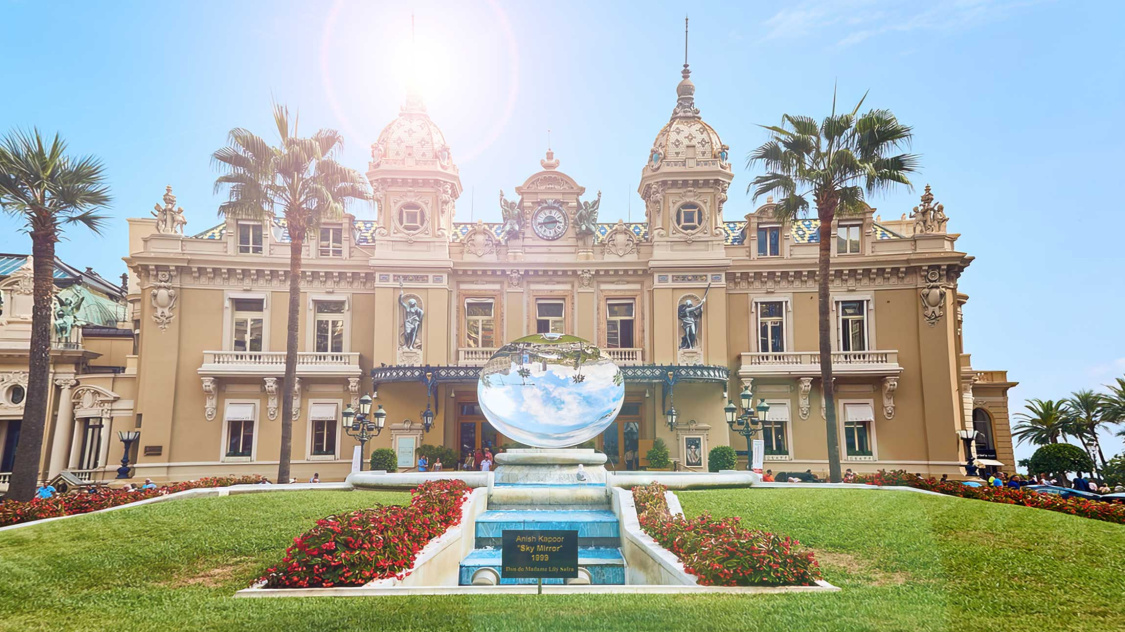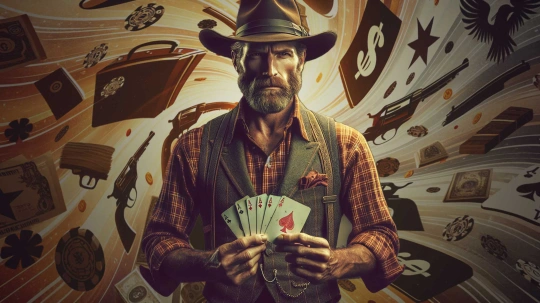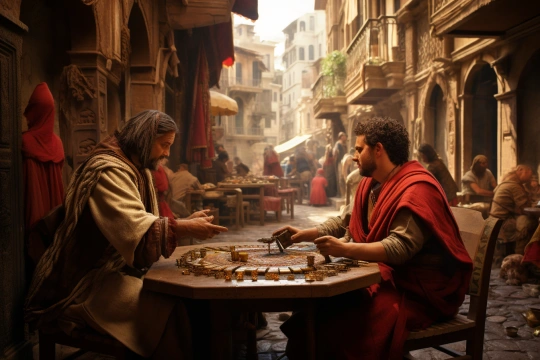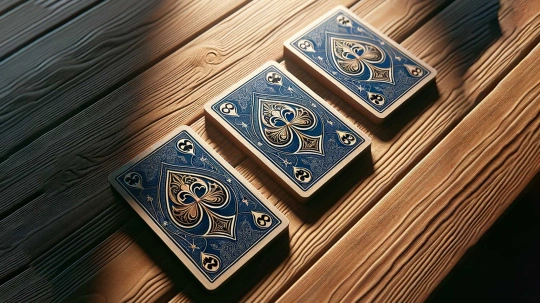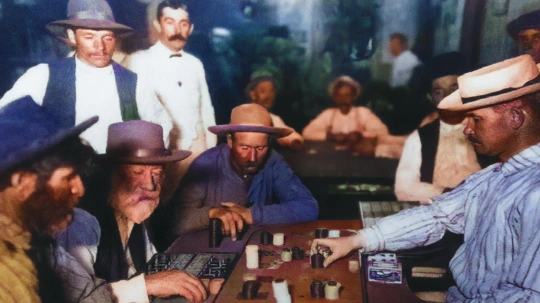The glittering gem of the French Riviera, Monte Carlo, has long epitomized splendor and sophistication. Nestled in Monaco, bordered by French and Italian coasts, it captivates global attention with its sumptuous casinos, majestic performances, and the grandeur of unparalleled structures that mirror the magnificence and finesse of European aristocracy.
Few are aware that Monte Carlo's origins were marked by an era when gambling was not so much a popular pastime as it was an exclusive pursuit. Daring entrepreneurs and prominent architects poured their expertise and vision to craft something extraordinary – and their dreams realized. Monte Carlo evolved not merely as a place to tempt fortune at the gaming tables but also as a symbol of a lifestyle, where every moment is imbued with celebration and opportunity.
In this article, we embark on a historical journey through Monte Carlo, from its modest beginnings to its status as a worldwide epicenter of gambling and opulence. We delve into the past to witness how the legend we know today was meticulously assembled, explore the architectural wonders that serve as the principality's hallmark, and discover how the entertainment industry has influenced the region's sports and culture.
We will also lift the veil on the exclusive services and offerings of Monte Carlo's casinos and shed light on the remarkable events that unfolded within its walls through stories and anecdotes. Finally, we will consider how Monte Carlo faces contemporary challenges and what innovations await it in the future.
Our tale of Monte Carlo begins, a place where luxury and fortune walk hand in hand, creating myths and legends that live in the hearts of people around the world.
The Historical Roots of the Gaming Haven
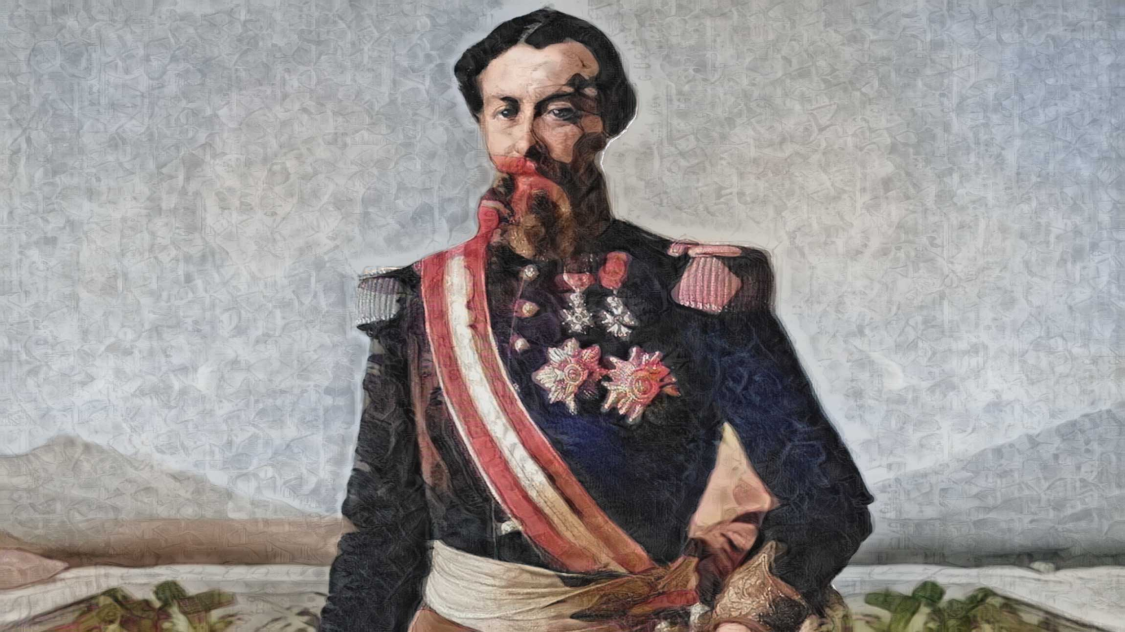
Nestled in the heart of Europe, on a slender strip of land bordered by sea and mountain, lies Monaco — a principality whose fame and history eclipse many larger and more populous nations. Monte Carlo, its most famed sector, has not always been synonymous with luxury and chance. Its tale is one of transformation from an inconspicuous nook into the global capital of gaming and entertainment.
For much of its history, Monaco was a modest state, its destiny swinging with the political pendulum of Europe. However, the mid-19th century brought a pivotal event that sparked the principality's grand metamorphosis. Prince Charles III, grappling with economic hardships, decided to inaugurate a gaming house to attract wealth and prosperity to his lands.
The first casino in Monte Carlo opened its doors in 1856, but initially, its remote location and lack of convenient transport routes limited visitor numbers. Recognizing the potential, the prince enlisted François Blanc, the proprietor of the successful Bad Homburg casino, who agreed to transform Monte Carlo into a beacon for the aristocracy and affluent tourists.
Blanc brought about significant regional infrastructure improvements, including the construction of a railway connection that eased access to the casino. He introduced novel games and service standards that rapidly made Monte Carlo a hit among the European elite. The goal was to create not just a gaming area but a realm where wealth and status could be ostentatiously displayed in the finest forms, which was indeed achieved.
Over time, Monte Carlo became a byword for gambling, drawing nobility and high-stakes players from across the globe. It evolved into a gathering place for high society to exchange news, strike up deals, and, of course, try their luck.
The casino became vital to the economy of the principality, emerging as a primary revenue source and enabling Monaco to achieve financial autonomy. It was thanks to Prince Charles III's bold and visionary decision and François Blanc's entrepreneurial spirit that Monte Carlo gained its unique identity, embodying an aura of success and opulence.
Gradually, the casino expanded its horizons, incorporating new forms of entertainment and social events that turned it into more than just a gaming venue but a cultural hub. The unveiling of the Monte Carlo Opera in 1879, designed by the renowned architect Charles Garnier, is a testament to this. Comparable in grandeur to the Paris Opera, it cemented Monte Carlo's ambition to be not just a gaming center but a cultural beacon in Europe.
The gaming district of Monte Carlo, with its lavish salons and high stakes, became a theater where numerous historical events unfolded, including legendary wins and losses that entered the annals of gambling. It was a place where roulette masters and card game virtuosos built their empires, and where fortunes were made and lost in a single evening.
Moreover, Monte Carlo played a pivotal role in the development of probability theory and statistics. The famous "Monte Carlo problem" and the subsequent use of the Monte Carlo method in calculations and simulations have their roots right here, in the halls where each dice roll or roulette spin are random events studied by mathematicians.
Undeniably, the historical roots of Monte Carlo's gaming zone run deep into the soil of European culture and history. This was not merely an economic endeavor. It was the creation of a world where every stone and card turn contributed to the myth of Monte Carlo, which continues to attract lovers of luxury, adventure, and, of course, the thrill of the game.
The Architectural Splendor of a Casino
The opulence of the Monte Carlo casino extends beyond its gaming tables and lavish decor. Its architecture stands as a prime example of the Belle Époque, an era marked by luxury and sophistication in European art and design. Constructed in 1863, the casino building represents the realization of Charles Garnier's dream, the renowned architect who also designed the Paris Opera House.
The Influence of Charles Garnier
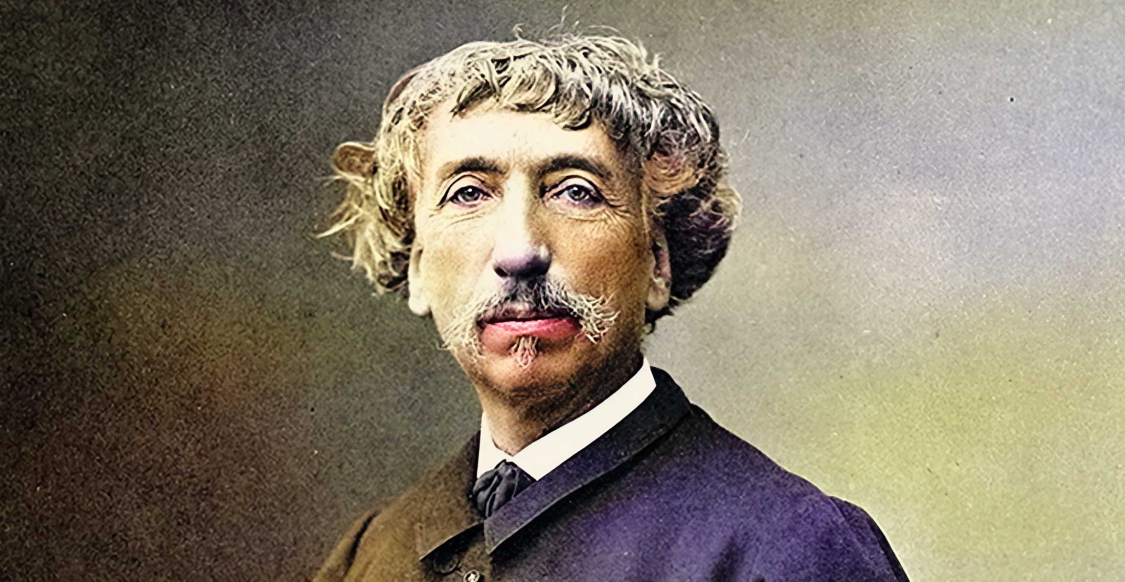
Selected for his talent and the reputation he earned following the inauguration of the Paris Opera, Charles Garnier's style, characterized by excellence and meticulousness, was perfect for creating a structure meant to radiate splendor and grandeur. Garnier successfully incorporated elements of Baroque, Renaissance, and Classicism, crafting a masterpiece that embodies the spirit and ambitions of Monaco.
Adorned with ornamental carvings, sculptures, and gambling motifs, as well as muses intended to inspire visitors, the casino's facade captivates onlookers, while the opulent halls and gilded decorations inside continue the theme. Over time, the casino has been expanded and updated to meet the increasing demands and expectations of its patrons. Each innovation and restoration was carried out with care to preserve the historical appearance of the building. As a result, Monte Carlo Casino remains a living museum of architectural art despite the continuous integration of modern conveniences and technologies.
Monte Carlo Casino is not merely a gaming establishment; it is an architectural marvel that continues to awe with its beauty and magnificence, remaining a vital part of Monaco's cultural heritage.
Games Setting the Standard
In the heart of Monte Carlo, where time appears to pause in the presence of enduring luxury, casino games are more than entertainment—they are an embodiment of history, elegance, and style. Let's explore how classic gambling games have been transformed in Monte Carlo, setting the standard for the entire world.
From the outset, Monte Carlo Casino offered its visitors a range of the most popular games of the time. Roulette, with its deep historical roots, became the evening's star amidst marble walls and golden adornments. Baccarat, the game of aristocrats, found its niche among the elite, while blackjack appealed with its strategic depth and accessibility.
However, Monte Carlo never rested on its laurels. Aiming for innovation, the casino adopted cutting-edge technologies and practices. For instance, surveillance systems to ensure fair play were among the world's first. The introduction of electronic slot machines and betting management software propelled the gaming experience into a new era.
The personalities who have graced the casino form a pantheon of stars in their own right—including kings, celebrities, and even literary figures like James Bond, who, in Ian Fleming's novel "Casino Royale," tried his luck in Monte Carlo.
These games, individuals, and moments of triumph and defeat together weave the fabric of the casino’s history, making it not just a place for gambling but a living symbol of the culture and traditions that set standards worldwide.
The Monte Carlo Casino and Formula 1
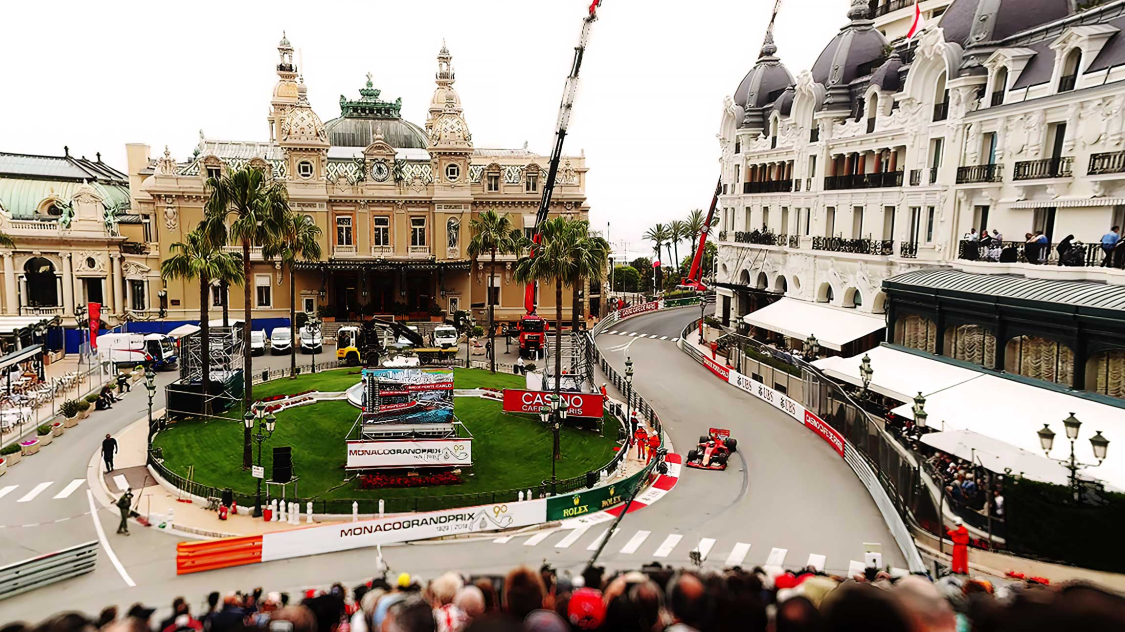
The Monte Carlo Casino, together with the Monaco Grand Prix, stands as one of the most prestigious and visually stunning events in the Formula 1 World Championship racing calendar. Historically and culturally interwoven, these two icons of luxury and velocity are emblematic of the principality of Monaco's sophistication and exclusiveness, drawing the attention of the global elite and motorsport enthusiasts alike.
Since the inaugural Monaco Grand Prix in 1929, the Monte Carlo Casino has played an active role in the event's organization. The race winds through the streets of the district, including the famous bend near the casino itself, which has become an iconic spot for photographs and television broadcasts, effectively turning each race into a promotional event for the casino and cementing its image in the minds of millions of viewers.
The Monte Carlo Casino has contributed to the popularity of Formula 1 like no other gaming establishment in the world, offering a lavish venue for the meeting of drivers, sponsors, and VIP guests. Amidst the clatter of casino gaming rooms and the clinking of champagne glasses, the worlds of business and sport converse, strengthening the status and significance of both institutions.
During the races, the casino transforms into the hub for various Formula 1 related events, including receptions and parties. It is a time when casino visitors can witness historic moments in sports, meet renowned drivers, and become part of an elite community for whom speed and thrill are two facets of the same coin.
The casino and auto racing in Monaco mutually enhance each other, creating a unique synergistic effect. The race brings global attention to the casino, while the casino provides the race with status and financial backing. With each passing year, this interconnection solidifies, highlighting the exclusivity and prestige of both events.
The Monte Carlo Casino and the Monaco Grand Prix represent more than mere gambling and speed. They showcase how two different worlds can merge, creating a distinctive phenomenon symbolic of Monaco's culture, history, and traditions. The casino's glittering façade and the fleeting silhouettes of racing cars weave a tapestry replete with drama and elegance that epitomizes the essence of Monte Carlo.
The Essence of Opulent Service and Unique Ambiance
The Monte Carlo Casino is more than a gambling venue; it's a universe where every aspect is designed to create an atmosphere of unmatched luxury and comfort. From the threshold, a journey begins into a realm where attention to detail and high-class service are not just phrases but realities felt in every gesture and glance of the staff.
Impeccable Service
The service culture at the Monte Carlo Casino has reached its zenith. Guests are greeted with constant smiles and attentiveness that have become the hallmark of this majestic establishment. The casino staff embody perfection in every movement and are always ready to anticipate the clientele's every desire. From the concierge to the gaming table dealers, each moment of the stay is imbued with care and exceptional courtesy.
Exclusive Dining and Entertainment Venues
The casino's restaurants and bars are culinary masterpieces, where each dish and drink is a work of art. Chefs and bartenders, true maestros in their craft, skillfully work with the highest quality ingredients to bring the most refined gastronomic fantasies to life. Dining here is not just a meal; it's a ceremony designed to satisfy the most discerning palates.
Atmosphere of the Interior
The interior of the Monte Carlo Casino harmoniously blends historical charm with modern comfort. Decorative elements, from luxurious carpets to crystal chandeliers, are designed to evoke a sense of grandeur and warmth. The gaming halls are adorned with precious woods, marble, and gold, adding to the establishment's prestige and highlighting its centuries-old traditions.
Playing at the casino, patrons are enveloped by an atmosphere that fosters complete immersion into the world of gambling. It's no surprise that many clients return time and again, seeking to relive the unique sensations available only within the walls of this legendary place.
The Monte Carlo Casino is not merely about gaming; it's a location where every aspect serves a singular purpose: to provide guests with an unforgettable experience. Here, anyone can feel like royalty, where every evening is transformed into a celebration, and every visit leaves memories that last a lifetime.
The Casino's Role in Monaco's Economy
The Monte-Carlo Casino has long been a significant contributor to the economy of Monaco. In the year 2019, before the global pandemic struck, the casino generated approximately 210 million euros, accounting for about 4% of the principality's total revenue. Following the pandemic, with the gradual revival of tourism and the resumption of full-scale operational activities, these figures are expected to rise.
Comparison with Global Competitors
In comparison to larger gaming markets such as Las Vegas and Macau, where annual revenues range from several billion to tens of billions of dollars, Monaco occupies a more specialized niche. Nonetheless, considering the scale of Monaco's economy and its population, these figures are notably impressive.
Tourism plays a vital role for the casino, and it is estimated that Monaco attracts over 350,000 visitors each year, many of whom come with the intent of visiting the casino. This directly benefits other sectors of the economy, including hotels, restaurants, and retail.
Economists predict that the Monte-Carlo Casino will continue to be a pivotal player in Monaco's economy as the principality seeks to diversify its income sources and strengthen its economic independence. The advancement of digital technologies and online gambling also offers new avenues for growth and innovation in the gaming industry.
Monte Carlo's Entertaining Tales
The Monte Carlo Casino, an incarnation of opulence and fortune, not only gathers thrill-seekers from around the globe within its gaming halls but is also the source of countless amazing tales that have traversed the bounds of time to become the stuff of legend.
The Tale of "The Man Who Broke the Bank"
Among the most famous tales associated with the Monte Carlo Casino is the story of Charles Wells, known as "The Man Who Broke the Bank at Monte Carlo". In 1891, Wells arrived in Monaco with a modest amount of money and started playing roulette with his peculiar betting system. To his and everyone's astonishment, he amassed millions of francs over a few days. His incredible run inspired a popular song and spawned many legends.
The Fable of the "Unlucky Austrian"
Another enigmatic tale speaks of an Austrian baron who, in the early 20th century, gambled away a fortune in one night at the Monte Carlo Casino. Legend has it that in despair, he placed his last franc on red and lost. Instead of succumbing to sorrow, the baron proclaimed that life is full of lessons and each defeat is a step towards the next victory. His philosophical outlook and cheerfulness inspired many gamblers of that era.
The Quirk of the "Prince's Gamble"
Stories about royal family members who occasionally visited the casino are bound to bring a smile. One such anecdote involves a prince from a European country who, in the heat of the game, made such an unconventional bet that it became historical. The prince decided to wager on every single number on the roulette wheel. This act, void of any strategy, was perceived by onlookers as a display of royal whimsy.
The Story of the "Lucky Glove"
There's a curious case of an elegant lady who was said to never gamble without her "lucky" glove. She claimed it brought her luck, and indeed, her gaming outcomes seemed to support this belief. She won so frequently that other players started to believe in the magic of her glove, even trying to touch it for luck before placing their bets.
The Mysterious Disappearance of the "Ball of Destiny"
Not to forget, there's the mysterious tale of the "Ball of Destiny". On one of the most enigmatic evenings at the Monte Carlo Casino, the roulette ball suddenly disappeared during a spin, leaving players and staff bewildered. Rumors spoke of supernatural intervention, but it turned out that the ball had rolled to a spectator who accidentally took it as a memento. The ball was returned, but the story of the "missing ball of destiny" remained in the annals of the casino.
The Pinnacle of Generosity "The Gift of Fortune"
Incredibly, there was an instance where a regular patron, having won a substantial amount, decided to share his windfall. He left a significant sum at the casino's cashier, instructing that the money be divided equally among all the establishment's employees. This noble act became a legend among the staff and has since inspired generosity and mutual support.
The Incident of the "Mistaken Bet"
A humorous note is added by the story of an unwitting tourist who accidentally placed his chips on the wrong table. To his amazement, this blunder brought him a considerable win. From then on, this individual became convinced that sometimes the best decisions are those made by chance.
Conclusion
As we conclude our journey through the history and modernity of the Monte Carlo Casino, we find ourselves at the intersection of eras, witnesses to the coexistence of age-old traditions with the innovations of the future. From its humble beginnings to its rise as the casino kingpin, Monte Carlo remains a beacon not just of gambling, but of engineering prowess, cultural history, and economic savvy.
Culturally, the Monte Carlo Casino continues to be a treasure trove for historians and art aficionados alike, presenting a tapestry of architectural styles and aesthetic tastes. It has become a living museum where each room tells its own tale, and every gaming table echoes the dramatic turns of fortune.
Economically, the impact of the casino on Monaco is immeasurable. It stands as a cornerstone of the local economy, attracting tourists and gamers who contribute to the flow of capital and job creation. The Monte Carlo Casino is not merely a place of gaming; it is a catalyst for economic growth and stability.
Facing the future, the Monte Carlo Casino continues to evolve and adapt, showcasing a remarkable flair for innovation. In a world where digital technology and social shifts are redefining luxury and entertainment, Monte Carlo remains true to its heritage while meeting new challenges with grace and sophistication.
Monte Carlo, like a diamond shaped by history and polished by time, will continue to sparkle against the backdrop of global culture, economy, and entertainment. For centuries, the Principality of Monaco and its legendary casino have been and will remain vibrant testimonies to the human pursuit of beauty and the fervent quest for risk, creating a timeless splendor that everyone should experience.
